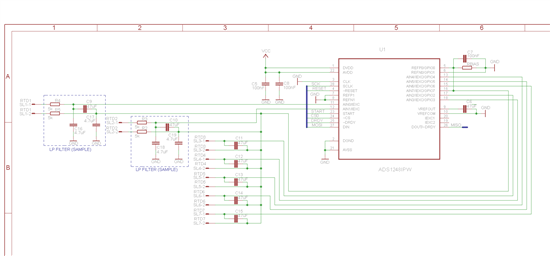Hi all,
I am developing an equipment that uses three ADS1148. I need to measure the temperature by using 20x pt1000 sensors, so I will MUXing channels. I am limited by time for one measuring and writing results (20 temp values + time) to FLASH memory.
So my question. I was reading datasheet and looking the table 12 (Data Conversion Time), but I don't know how to choose the Nominal Data Rate (SPS)? If I choose a higher value (20kSPS) the conversion time is shorter. But what is the problem of these higher (or lower 5SPS) values of SPS?
I am sorry for my bad English skill.
Thank you to all,
VojK


